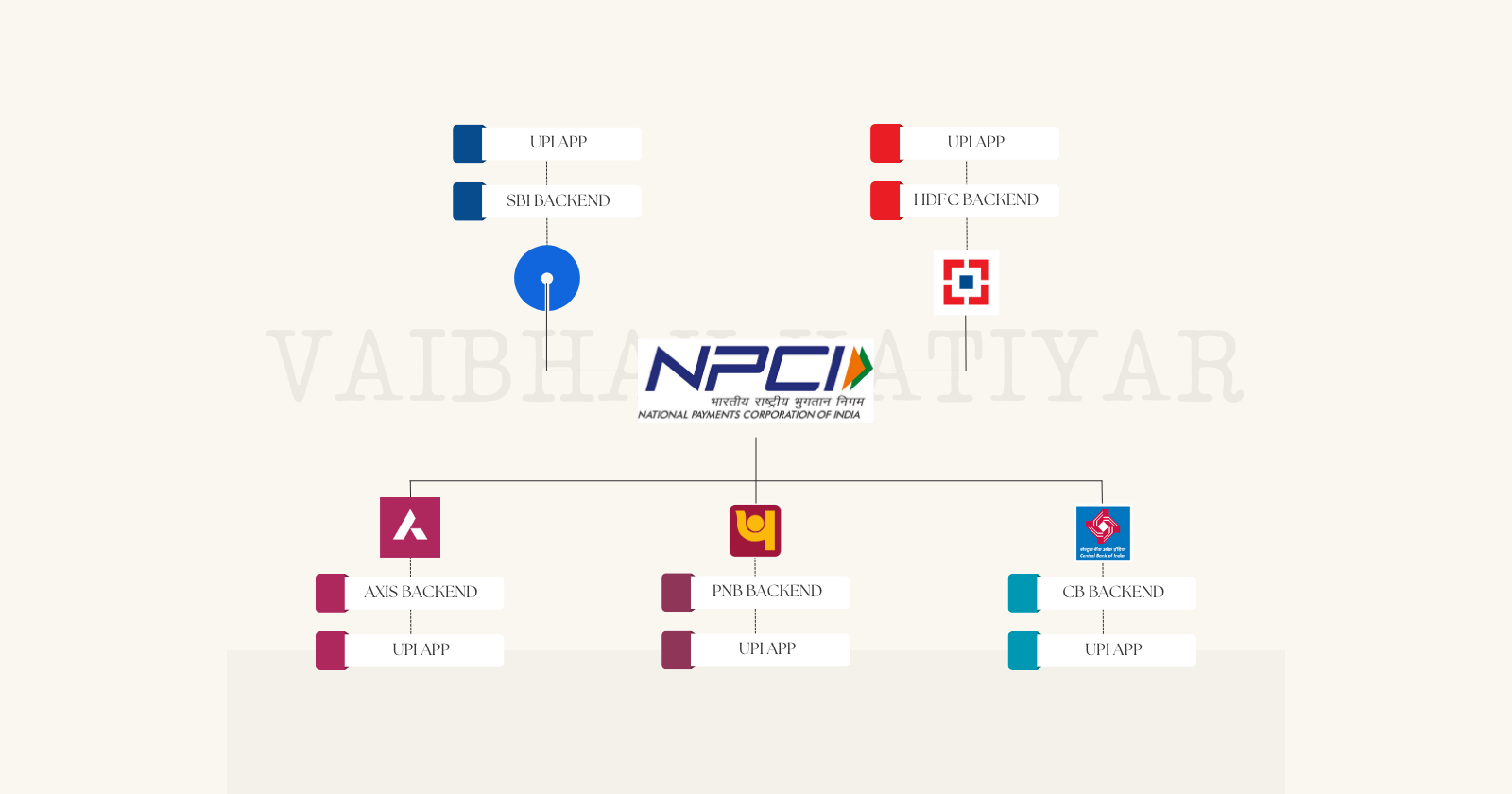Decoding UPI: How Your Phone Makes Instant Payments Possible (And How Banks Power It)
 Vaibhav Katiyar
Vaibhav Katiyar
Hey everyone, Vaibhav Katiyar here! Today, let's dive into the fascinating world of Unified Payments Interface (UPI), a revolutionary payment system that has transformed how we transact in India. We'll explore how it works, the role of Indian banks like SBI and HDFC, and the central hub that makes it all possible: the NPCI server.
What is UPI?
UPI, developed by the National Payments Corporation of India (NPCI), is a real-time payment system that allows instant money transfers between bank accounts using mobile devices. Forget about remembering lengthy account numbers or IFSC codes; UPI simplifies it all with Virtual Payment Addresses (VPAs) or QR codes.
The Magic Behind the Scenes: How UPI Works
Here's a breakdown of the typical UPI transaction flow:
Initiation:
You open your UPI app (like Google Pay, PhonePe, or BHIM).
You enter the recipient's VPA or scan their QR code.
You enter the amount and your UPI PIN.
Request to NPCI:
- Your UPI app sends a payment request to the NPCI (National Payments Corporation of India) server.
Bank Verification:
The NPCI server identifies the sender's and receiver's banks (e.g., SBI, HDFC).
It forwards the request to the respective bank servers.
The bank recieves the request, and verifies the UPI pin with the bank's database.
Authorization and Transfer:
The sender's bank (e.g., SBI) verifies your UPI PIN and checks your account balance.
If everything is valid, the bank debits the amount.
The receiver's bank (e.g., HDFC) is notified by the NPCI.
The receiver's bank credits the amount to the reciever's account.
Confirmation:
Both banks send confirmation messages back to the NPCI server.
The NPCI server relays the confirmation back to your UPI app and the recipient's app.
You and the reciever both recieve a notification.
The Role of Indian Banks (SBI, HDFC, and Others)
Banks like SBI and HDFC are the backbone of the UPI system. They:
Maintain Accounts: They hold your bank accounts and manage your funds.
UPI Pin Verification: They verify your UPI PIN to ensure security.
Transaction Processing: They process debit and credit transactions in real-time.
Security: They implement robust security measures to protect your financial information.
Integration: They integrate their systems with the NPCI server to enable seamless UPI transactions.
The NPCI Server: The Central Hub
The NPCI server acts as the central switch, facilitating communication between all participating banks. It:
Routes Transactions: It directs payment requests to the appropriate banks.
Maintains Interoperability: It ensures that different UPI apps and bank accounts can interact with each other.
Provides Security: It implements security protocols to protect the integrity of the UPI system.
Real-Time Processing: It handles a massive volume of transactions in real-time.
Simultaneous Interaction with the NPCI Server
One of the key strengths of UPI is its ability to handle a large number of transactions simultaneously. Here's how:
Scalability: The NPCI server is designed to handle high transaction volumes.
Real-Time API's: Banks utilize API's to communicate with the NPCI server in real time.
Distributed Architecture: The NPCI and bank servers utilize distributed systems to handle load.
Redundancy: Systems have redundancy to ensure uptime.
Essentially, when multiple users initiate UPI transactions, their requests are sent to the NPCI server. The server, equipped with robust infrastructure, can handle these requests concurrently, forwarding them to the appropriate banks. Each bank processes its transactions independently and communicates back to the NPCI server, allowing for a seamless and efficient experience.
Conclusion
UPI has revolutionized digital payments in India, offering a fast, secure, and convenient way to transfer money. The collaborative effort between the NPCI and Indian banks like SBI and HDFC has made this possible. The ability of the NPCI server to handle simultaneous interactions ensures that UPI remains a reliable and efficient payment system for millions of users.
I hope this blog post has provided you with a clear understanding of how UPI works. Feel free to leave your questions and comments below!
Until next time,
Vaibhav Katiyar.
Subscribe to my newsletter
Read articles from Vaibhav Katiyar directly inside your inbox. Subscribe to the newsletter, and don't miss out.
Written by
